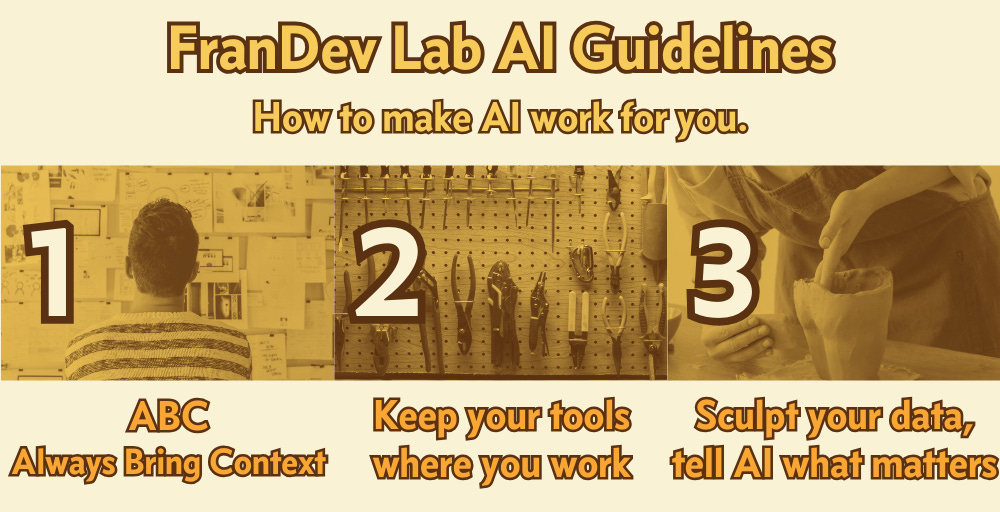AI Adoption Guidlines
AI Tools and features are exciting; you need some guidelines to be successful.
In this Executive Brief:
As this arrives in your inbox, we’re just a couple days from a TON of AI announcements at HubSpot’s annual InBound conference. There will be a lot of buzz and excitement, but you need to keep your head about you. To be successful you can’t just “Do AI”. Here are FranDev Lab’s Guidelines for successful AI projects.




